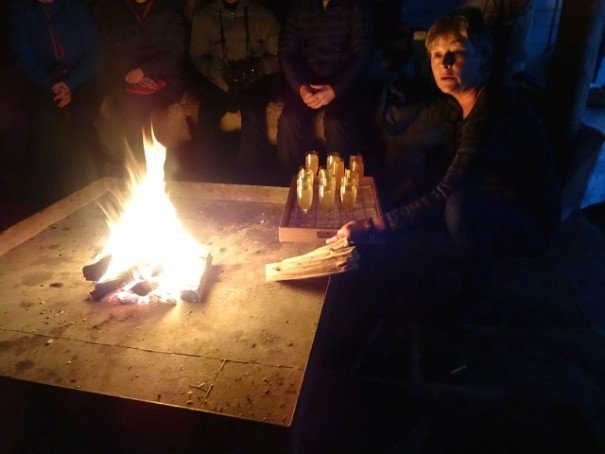
Viking Graves and Drinking Outside in Freezing Weather Sounds Like Peak Norway

Viking Graves and Drinking Outside in Freezing Weather Sounds Like Peak Norway
Cocktails in Leikanger
I couldn’t pronounce it, but within hours of arriving in the municipality of Sogndal in western Norway, I experienced friluftsliv. Roughly translated as “open-air living,” it is a point of pride for Norwegians. Learning outdoor skills is enshrined in the school curriculum and the law guarantees people rights of access across open land. Stores close mid Saturday afternoon in rural Norway and don’t open again until Monday. Weekends are for exploring the outdoors with family: hiking in the summer, skiing in the winter, or gathering berries if your knees are shot.
I had started my day with yoga outside, holding a triangle pose in the cold, in the rain and in the dark; the sun doesn’t come up until almost 9 am in late November. I followed it with a few hours kayaking on Sognefjord, Norway’s longest and deepest fjord. I wasn’t surprised to find dinner at a farmhouse built in 1760 would start with cocktails outside. Where better to experience friluftsliv?
Norwegians have a long history of open-air living. Until the 1960s, their dependence on agriculture and fishing meant people spent lots of time outdoors. I even overheard some locals claim friluftsliv was better if the weather was bad, claiming it made for bigger challenges and greater satisfaction. That may be how the Norwegians roll, but I prayed for mild weather for my outdoors cocktails.
At the appointed hour, our group made our way to the community of Leikanger, arriving as the sun set a mere seven hours after it appeared and the temperature dipped below freezing. We walked past baskets of apples gathered from nearby orchards and settled around a small fire in a drafty, wooden shelter. The fire provided welcome warmth for my chilled hands.
Our hostess told us there were Viking graves nearby as she passed out goblets of champagne and recalled her family’s history. Her father told her the graves contained bodies from a 13th-century battle between Vikings sailing the fjord; however, carbon dating of the burial site had disproved that theory. Scientists said the bones were not old enough by several decades to have been the people in the battle.
Our hostess seemed dismayed that her father’s tale was not true, but a man in our group announced he was an expert on carbon dating and that due to diet deficiencies he had observed in the region, the carbon dating could have been off by the amount of time in question. Everyone cheered at having solved the mystery, and we raised our glasses in a toast to Vikings and friluftsliv.